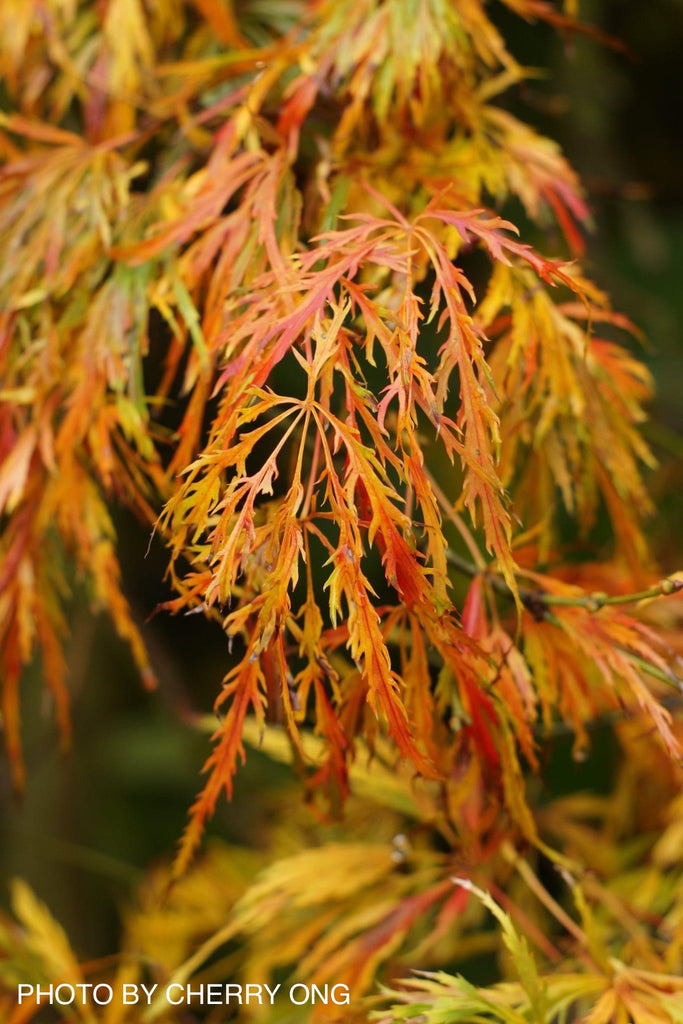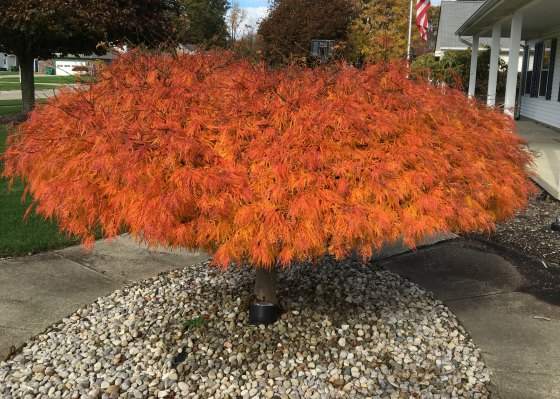

The Waterfall Japanese Maple is generally compact and slow growing, requiring little to no pruning. To fertilize, add a balanced, slow-release fertilizer to the area around the tree’s roots in early spring. Some signs of under-watered Japanese Maples include dry, crispy leaf edges. Water the Waterfall Japanese Maple regularly to maintain consistently moist soil, taking care to never let the roots dry out completely, especially in hotter climates. Japanese Maples grow best when planted in acidic, well-draining soil that is rich in organic matter. In hotter, drier regions, it is best to provide some protection from intense afternoon sun and heat to prevent the leaves from burning and the roots from drying out.
Waterfall japanese maple care full#
Waterfall Japanese Maple Careĭepending on the climate, Japanese Maples thrive in full sun to partial shade. You can surround it with low-growing perennials and annuals for a lovely garden vignette. The Waterfall Japanese Maples is typically used as a decorative statement piece because of its unique shape, size, and color. In addition, deer tend to leave Japanese Maples alone, allowing them to be placed in shadier woodland gardens. While these trees benefit from minor pruning and shaping, their small size and slow growth makes them a low maintenance tree. Once mature, the Waterfall Japanese Maple can be quite drought tolerant. Growing slowly 6 to 8 feet tall and 8 to 10 feet wide, the Waterfall Japanese Maple can fit snugly into many garden designs. In the fall, these petite trees shine with vibrant apricot leaves. It also nicely complements a water feature and makes a stunning patio display in a large decorative pot.

With its delicate, feathery, apple-green leaves atop cascading branches, the Waterfall Japanese Maple is the perfect ornamental tree to create a focal point.

All kinds of varieties and they do just fine.To make a statement in a garden, nothing quite compares to a beautiful Waterfall Japanese Maple ( Acer palmatum dissectum ). With that said, I grow Japanese maples in out in the field, in full sun. It is necessary? Not in zones 5 or 6, but in warmer zones it would be beneficial. How about that fall color? From fluorescent green to a beautiful burnt orange!Ī little shade is always beneficial to a dissectum Japanese maples because it gives the foliage a little break from the sun in at least part of the day. You can easily kill them with too much fertilizer. Please do not over fertilize your Japanese maples. It is said that regular watering can prevent that, but I am always leary of telling people to water Japanese maples on a regular basis because if the soil in your yard does not drain well it’s very easy to over water them and they do not like wet feet. Like most dissectum Japanese maples the edges of the leaves turn slightly brown in late summer. They do really well here in zone 5 and will probably do equally well up to zone 8.

I’ve had a number of these ‘Waterfall’ Japanese maples in my landscape for years. Right now the foliage is almost fluorescent green. I don’t feel that even these photos do this tree justice.


 0 kommentar(er)
0 kommentar(er)
